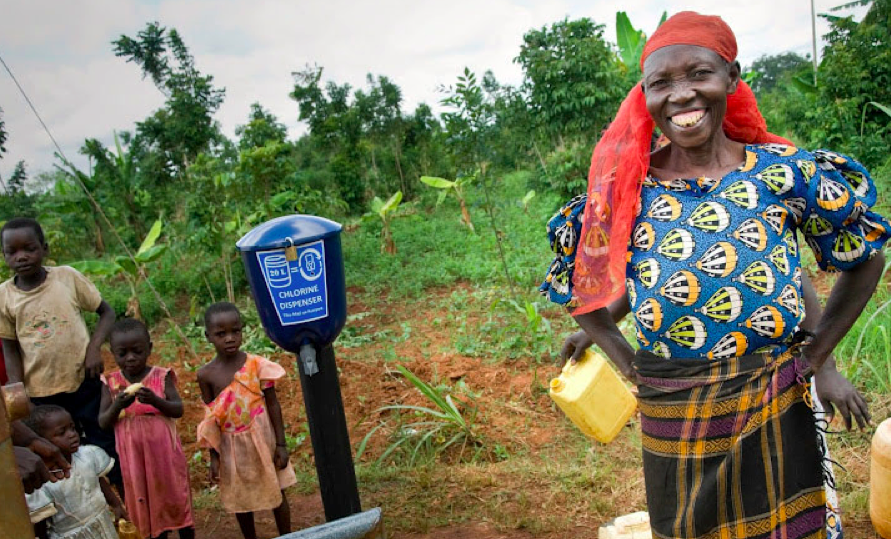We’ve all heard the warnings: don’t drink the tap water! Whether in Mexico, Montenegro, or Mozambique, we’re often cautioned as travelers about local water sources, and for good reason: Globally, 768 million people worldwide drink unsafe water. Contaminated water can lead to diarrheal diseases, which cause the deaths of 2 million people each year. 1.5 million of these deaths are children -- a figure that’s higher than the number of lives claimed by AIDS, malaria and measles combined.
So, as travelers we have good reason to be wary. On the road, I’ll opt for bottled water for drinking, washing foods, and tooth-brushing. This small inconvenience helps keep me safe, and also makes me feel that much more grateful upon returning home for the reliability of water sources that I can too easily take for granted in my day-to-day life.
But many, many people cannot afford to live their lives as travelers, buying bottled water for their daily needs. So how do we fix this?
There have been many attempts to improve the water quality in developing countries. Protected springs or wells offer access to a safe source, but recontamination becomes an issue when people collect the water in dirty containers or don’t wash their hands. Chlorination treatments are a promising way to solve this problem, as they can prevent recontamination for up to 72 hours. Initial interventions focused on the home: treatments were packaged in individual bottles, and were promoted through vigorous marketing efforts to households.

The promotion efforts for chlorination seemed to work – studies conducted in western Kenya found that 70% of households interviewed understood that unsafe drinking water causes diarrhea, and 75% of them know about chlorine treatments as a solution. Adoption of the treatment, however, has remained a problem. Even though home chlorine treatments are affordable at approximately 30 US cents per month, only 5% of these same households claim to use them.
Innovations for Poverty Action (IPA), a research group focused on understanding what works, and doesn’t, in international development, has spent over half a decade monitoring different water treatment methods in hopes of developing a solution that works. With the Dispensers for Safe Water Program (DSW), IPA changed the distribution method, opting to forgo the small bottles meant for home use and instead installing a larger, communal container at the water source that everyone can access for free. A valve dispenses a pre-measured dose of chlorine to treat the water in an average-sized collection container, and a community promoter is elected to refill the containers and help people understand the benefits of treatment and how it works.
In randomized tests after installing these dispensers, IPA found that 61% of households had detectable chlorine in their water – a significant increase from the 5% that was detected in the home treatment intervention. According to IPA’s research, the main reason for this increase lies in the communal aspect of treatment – as people see their neighbors treat their water, it serves as a reminder to do the same. Increased chlorine usage translates to saved lives, as communities reduce their rates of diarrheal disease with the simple turn of a valve.
Not only is this program more effective than home treatments, but it also reduces the cost of distribution. Less packaging inevitably leads to lower costs and less waste. By using reusable containers that are refilled when necessary, DSW’s treatment option costs less than 50 US cents per person per year.
With this level of success and cost savings, the DSW program is well poised for scale. So far, the DSW program has installed over 3,000 dispensers in East Africa that serve 632,000 people, but they’ll soon be able to reach over 5 million people with a recent WASH for Life grant of $5.5 million. WASH for Life (Water, Sanitation and Hygiene for Life) is a 17 million dollar partnership between USAID and the Bill and Melinda Gates Foundation that serves to “identify and rigorously test new WASH technologies and delivery models, and then scale and replicate those that are proven successful.”
At Kiva, we have a few partners already that work to provide clean water and sanitation services to the populations that need them most -- including our new partner Evidence Action. One of these, Sanergy, was also a WASH for Life funding recipient. We’re excited to see what future successes this initiative will bring to the world of public health, and we look forward to learning about and sharing new innovations that are ready to scale.
Have questions about Kiva's initiatives to bring clean, safe drinking water to more people? Send them our way at blog@kiva.org.
PREVIOUS ARTICLE
Four months of weekends, well spent in the Philippines →NEXT ARTICLE
The 22nd Class of Kiva Fellows Takes to the Field! →














